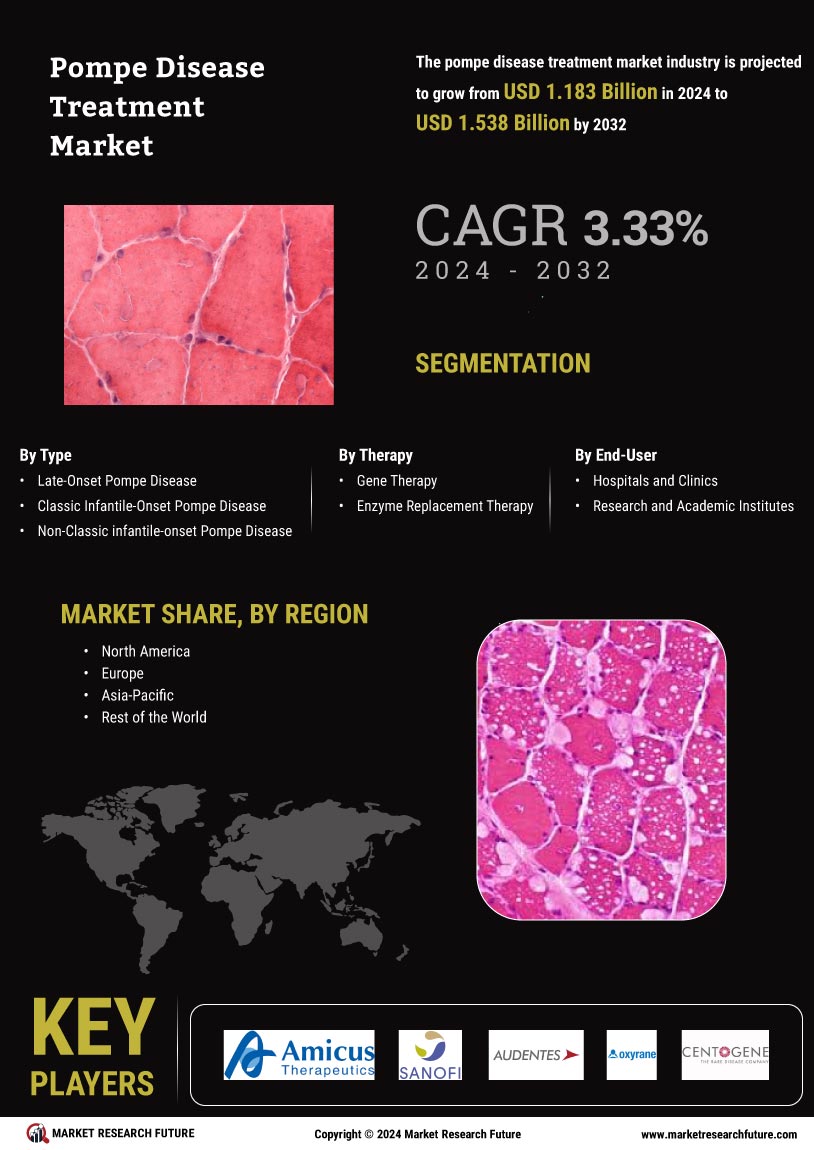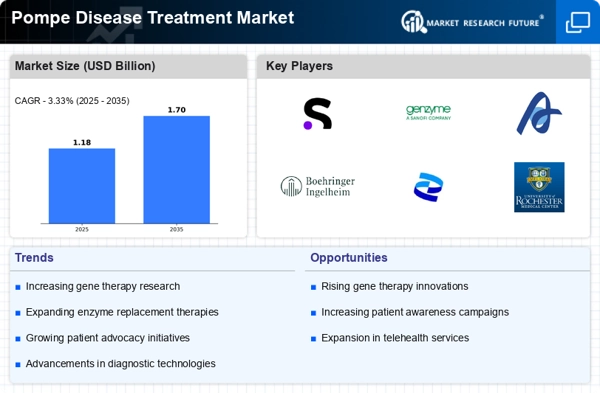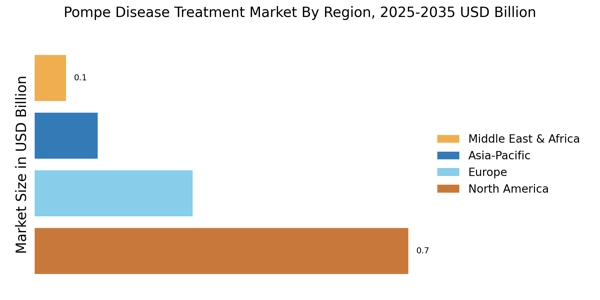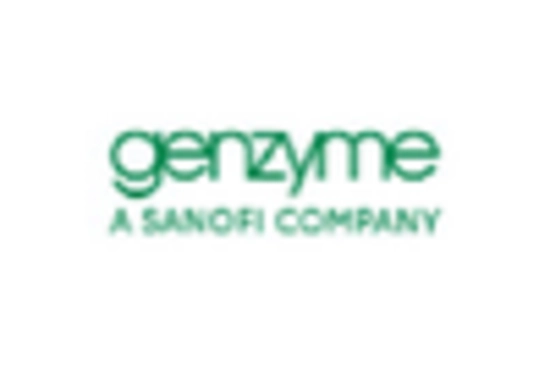Growing Awareness and Advocacy
The rise in awareness and advocacy for Pompe disease is playing a crucial role in shaping the Pompe Disease Treatment Market. Patient advocacy groups and non-profit organizations are actively working to educate the public and healthcare professionals about the disease, its symptoms, and the importance of early diagnosis. This increased awareness is likely to lead to more individuals seeking medical attention and, consequently, more diagnoses. Furthermore, advocacy efforts are pushing for better access to treatments and funding for research, which could enhance the availability of therapies in the market. As awareness continues to grow, it is anticipated that the demand for effective Pompe disease treatments will also increase, thereby driving market growth.
Rising Prevalence of Pompe Disease
The increasing incidence of Pompe disease is a notable driver for the Pompe Disease Treatment Market. Recent estimates suggest that the prevalence of this rare genetic disorder is approximately 1 in 40,000 live births. As awareness grows, more individuals are being diagnosed, leading to a heightened demand for effective treatment options. This surge in diagnosed cases is likely to stimulate market growth, as healthcare providers seek innovative therapies to manage the condition. The need for specialized care and treatment options is becoming more pronounced, thereby creating opportunities for pharmaceutical companies to develop and market new therapies. Consequently, the rising prevalence of Pompe disease is expected to significantly influence the dynamics of the Pompe Disease Treatment Market.
Advancements in Enzyme Replacement Therapy
Enzyme replacement therapy (ERT) has emerged as a cornerstone in the treatment of Pompe disease, driving the Pompe Disease Treatment Market forward. Recent advancements in ERT formulations have improved efficacy and patient outcomes, making these therapies more appealing to healthcare providers and patients alike. The introduction of newer ERT products has been associated with enhanced safety profiles and reduced side effects, which could lead to increased adoption rates. Market data indicates that the ERT segment is projected to grow at a compound annual growth rate (CAGR) of over 10% in the coming years. This growth is indicative of the ongoing innovation in treatment modalities, which is likely to bolster the overall market for Pompe disease therapies.
Regulatory Support for Innovative Therapies
Regulatory bodies are increasingly providing support for the development of innovative therapies for rare diseases, including Pompe disease, which is a key driver for the Pompe Disease Treatment Market. Initiatives such as orphan drug designations and expedited review processes are encouraging pharmaceutical companies to invest in the development of new treatments. This regulatory environment is conducive to bringing novel therapies to market more quickly, which could significantly benefit patients suffering from Pompe disease. The potential for faster approval timelines and market entry is likely to stimulate competition among manufacturers, ultimately leading to a broader range of treatment options. As regulatory support continues to evolve, it is expected to have a lasting impact on the Pompe Disease Treatment Market.
Increased Investment in Rare Disease Research
The growing investment in research and development for rare diseases, including Pompe disease, is a significant driver for the Pompe Disease Treatment Market. Pharmaceutical companies and research institutions are increasingly allocating resources to explore novel therapeutic approaches, such as gene therapy and small molecule drugs. This trend is supported by various government initiatives aimed at incentivizing research in rare diseases, which could lead to breakthroughs in treatment options. The financial backing for clinical trials and studies is expected to enhance the pipeline of therapies available for Pompe disease, thereby expanding the market. As a result, the influx of investment in rare disease research is likely to have a profound impact on the Pompe Disease Treatment Market.


















Leave a Comment